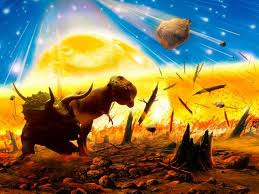21.anagenesis: Speciation pattern; changes in allele frequencies and morphology accumulate within an unbranched line of descent.

22.archipelago: Island chain some distance away from a continent.
23.biological species concept: Defines a species as one or more populations of individuals that are interbreeding under natural conditions, producing fertile offspring, and are isolated reproductively from other such populations. Applies to sexually reproducing species only.
24.cladogenesis: Speciation pattern in which a lineage splits and isolated populations undergo genetic divergence.

25.dosage compensation: Any mechanism that balances gene expression between the sexes during critical early stages of development.

26.evolutionary tree: Treelike diagram; a branch point means divergence from a shared ancestor and branches signify separate lines of descent.
27.extinction: Irrevocable loss of a species.
28.gene flow: Microevolutionary process; alleles enter and leave a population as an outcome of immigration and emigration, respectively.

29.genetic divergence: Gradual accumulation of differences in gene pools of populations or subpopulations of a species after a geographic barrier arises and separates them; thereafter, microevolution occurs independently in each.

30.gradual model of speciation: Idea that species arise by many small morphological changes that accumulate over great spans of time.
31.hybrid zone: Where adjoining populations are interbreeding and producing hybrid offspring.
32.mass extinction: Catastrophic event or phase in geologic time when entire families or other major groups are irrevocably lost.

33.parapatric speciation: Idea that neighboring populations can become distinct species while maintaining contact along a common border.

34.punctuation model of speciation: Idea that most morphological changes occur in a brief span when populations start to diverge; speciation is rapid, and the daughter species change little for the next 2-6 million years or so.

35.reproductive isolating mechanism: Heritable feature of body form, functioning, or behavior that prevents interbreeding between two or more genetically divergent populations.

36.speciation: The formation of a daughter species from a population or subpopulation of a parent species by way of microevolutionary processes. Routes vary in their details and duration.

37.species: One kind of organism. Of sexually reproducing organisms, one or more natural populations in which individuals are interbreeding and are reproductively isolated from other such groups.
38.sympatric speciation: A speciation event within the home range of an existing species, in the absence of a physical barrier. Such species may form instantaneously, as by polyploidy.











No hay comentarios:
Publicar un comentario